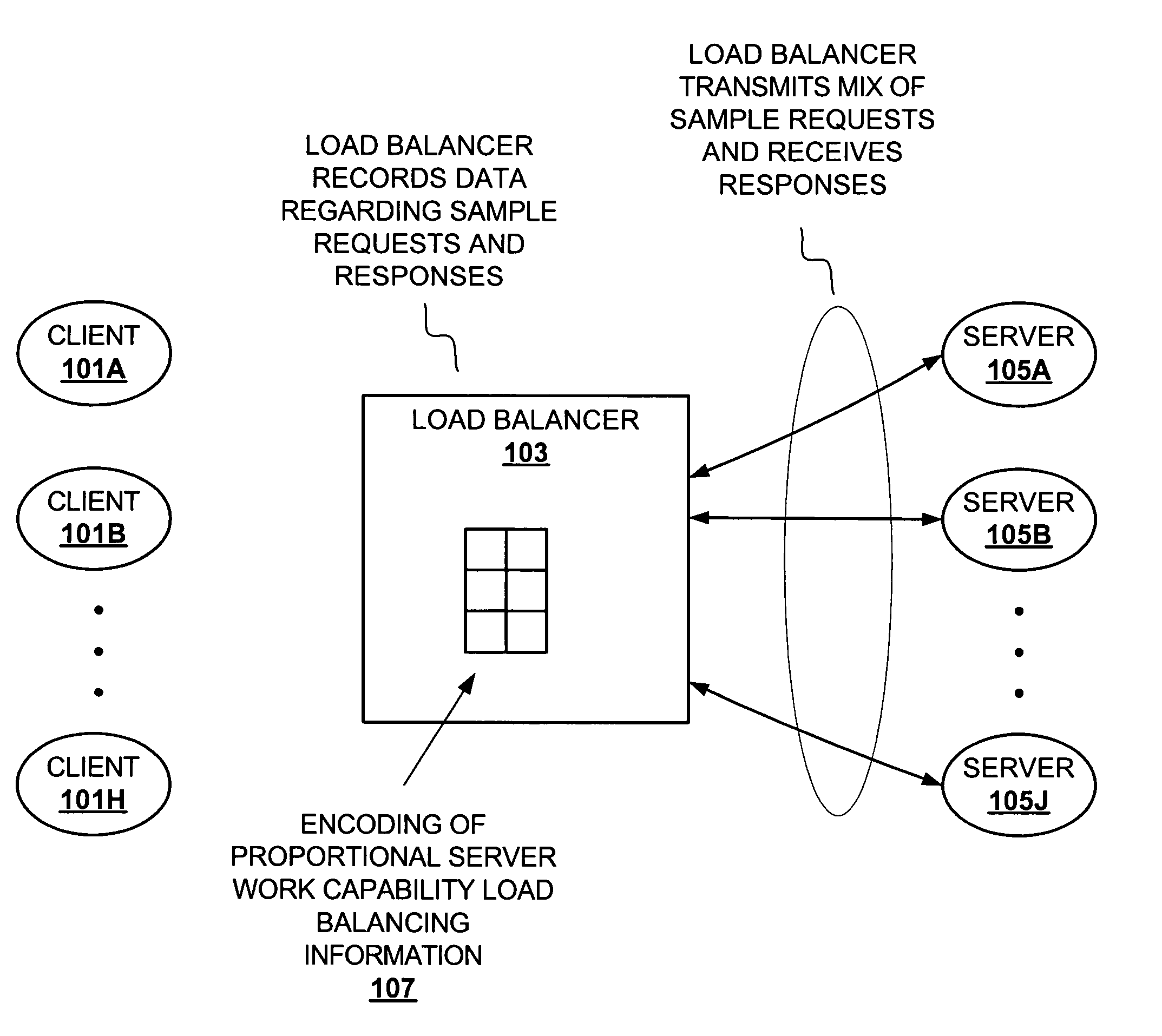Method and apparatus for adaptive load balancing
a load balancing and adaptive technology, applied in the field of networks, can solve the problems of inability to tolerate such latencies, negligible lock contention on the load balancing structure, delay in processing requests, etc., and achieve low overhead/low latency, facilitate efficient adaptive load balancing, and reduce load balancing decision-making
- Summary
- Abstract
- Description
- Claims
- Application Information
AI Technical Summary
Benefits of technology
Problems solved by technology
Method used
Image
Examples
Embodiment Construction
)
[0024]The description that follows includes exemplary systems, methods, techniques, instruction sequences and computer program products that embody techniques of the present invention. In particular, in some instances particular implementations suited to transactions, protocols, and services typical of servers such as those in accordance with Lightweight Data Access Protocol (LDAP), Universal Description, Discovery and Integration (UDDI), or the like, are described in some detail. However, it is understood that the described invention may be practiced without these specific details. In other instances, well-known protocols, structures and techniques have not been shown in detail in order not to obscure more general aspects of the invention.
[0025]Implementation of a load balancer ranges from a dedicated hardware load balancer to a process running on one or more network elements. The following description refers to a load balancer. The described load balancer may be implemented as an...
PUM
 Login to View More
Login to View More Abstract
Description
Claims
Application Information
 Login to View More
Login to View More - R&D
- Intellectual Property
- Life Sciences
- Materials
- Tech Scout
- Unparalleled Data Quality
- Higher Quality Content
- 60% Fewer Hallucinations
Browse by: Latest US Patents, China's latest patents, Technical Efficacy Thesaurus, Application Domain, Technology Topic, Popular Technical Reports.
© 2025 PatSnap. All rights reserved.Legal|Privacy policy|Modern Slavery Act Transparency Statement|Sitemap|About US| Contact US: help@patsnap.com



